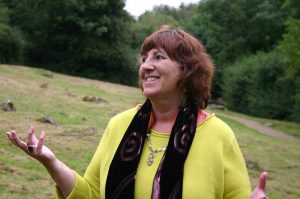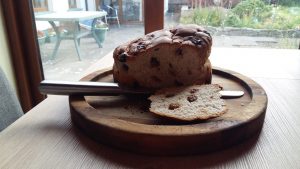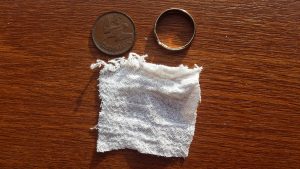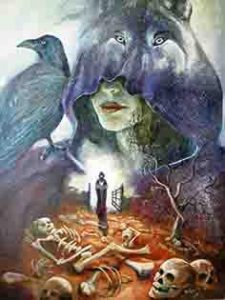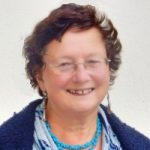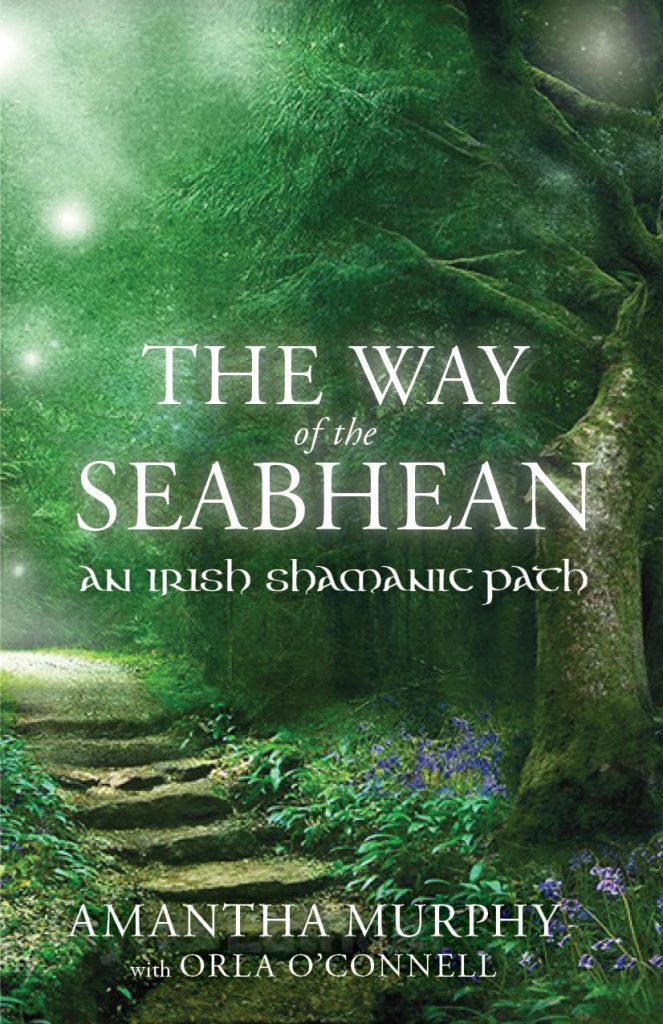Celebrating Samhain, by Orla O’Connell from “The Way of the Seabhean”
Throughout October, Trasna will focus on the Celtic festival of Samhain, known better to Americans as Halloween. The holiday originated in Ireland and celebrates that time of year when the veil between this world and the next grows thin, and life seems more mysterious.
This week we feature a blog piece by writer Orla O’Connell on The Way of the Seabhean, which she scribed for Amantha Murphy. But first some background from Orla: “My friend Amantha Murphy is an Irish seabhean- a female shaman, healer and visionary. She was schooled in the ways of wise women in Kerry, where her grandmother was a healer and midwife. In Ireland, the tradition of the healer woman has been passed down through the female line for many generations, possibly since the time of the Tuatha Dé Dannan. Every tribe had a seabhean, a woman who could journey between this world and the worlds of spirit and the ancestors, to bring back information that was needed for the tribe or for physical healing.
The secret practices of the healer woman have been closely guarded over the centuries. Often, these women’s lives depended on secrecy. Amantha has taken the courageous step of sharing this traditional wisdom in her book, The Way of the Seabhean, An Irish Shamanic Path. Dyslexia prevented her from writing the book herself, so she chose me as her scribe.
Amantha Murphy ~ Seabhean
The following excerpts from the Samhain chapter describe how Hallowe’en was traditionally celebrated in Ireland – and not a pumpkin or a broomstick in sight! The chapter gives glimpses of the rich, oral tradition shared with Amantha by Granny and her friends. There are also fascinating insights into Amantha’s work and shamanic journeying.”
“Celebrating Samhain,” from The Way of the Seabhean
scribed by Orla O’Connell
Samhain Traditions
On the ancient calendar, the year begins at Samhain, the gentle threshold between the light and the dark. It is the time when the veil is thinnest between us and the ancestors, which is why the Christian Church used it as the day of the dead, All Souls’ Day.
Traditionally, the year ended on 30th October and the new year began on the 1st November. The day between, the 31st October, was a day of no year. It belonged to the ancestors. On Samhain (Hallowe’en) people took out items (pieces of cloth, clay pipes, combs or jewellery) that had belonged to their ancestors. These mementoes helped them to connect and commune with them.
People battened down doors and windows, getting ready for winter. They brought the cattle indoors, to survive the winter and to keep the people warm in the bothán (cottage). Farm work slowed down, so they had time to visit each other and share stories of those who had passed on.
Samhain carried people into the winter months when days were short and nights were long. It was a time of integrating all that had gone on in the working months, for contemplation and for finding inner balance.
At Samhain, they called on their ancestors for help. In sharing the stories of the year – who had died, married or been born – and the stories of their people, they allowed themselves to release what they were holding.
Colcannon was the food of Samhain – potato, cabbage and onion mashed together with cream and butter. Barm-brack is a traditional fruit cake containing raisins, soaked overnight in tea. The tradition was to add a farthing coin, a piece of cloth, and a ring into the cake. Children waited anxiously to see if they would receive the farthing which meant they would be rich when they grew up, the piece of cloth which meant that they would be poor, or the ring which meant that they would marry. They often ate the cloth rather than admit that they had got it!
Turf (peat) is a symbol of Samhain and is part of our ancestry. According to our stories, Ireland was once a land of black oaks and apple trees. For thousands of years, the trees lived here in quiet relationship with the land and with the stone people until the two-leggeds came. So the trees, too, are our ancestors. Nearly a third of the land of Ireland is turf which holds the roots of the great, black oaks that have been sucked down into the earth. The turf kept the fire going all through the year, to smoke fish and meat for the winter, to cook food and to keep people warm. Turf is also a symbol of darkness and the colour of Samhain is black.
Samhain, the time of our ancestors, was the most important time of the year in Ireland, because the people believed, and still believe, that our ancestors walk with us and that we walk on their bones. Many of our ancestors died in the Great Famine and were never buried; so when we walk on the earth, we walk on the bones of our ancestors.
In the old tradition, when a person dies, a bee often comes and carries their soul to Tír na nÓg, the land of the forever young. Their spirit becomes part of the energy of the earth herself. So the air that we breathe, the colour of the flowers and the songs of the birds, all carry the energy of our ancestors. They are around us all the time.
The Goddess Tlachtga
The deity who presides over Samhain is the Goddess Tlachtga, a Munster goddess and daughter of Mog Ruith (Mog of the Wheel), the greatest magician this land has ever known. It is said that people were afraid to say his name aloud for fear of invoking him.
Mog Ruith and Tlachtga lived on Valentia Island, in County Kerry, which had been gifted to Mog Ruith by the King of Munster as a reward for his assistance in defeating the King of Connacht. Both Mog Ruith and Tlachtga lived for a span of three to four hundred years.
They built a magical wheel called the “Wheel of the Sun” and on this wheel they journeyed into many worlds and realities. It is said that Mog Ruith could shapeshift into a salmon, wolf, boar or hawk and that Tlachtga could shapeshift into a deer, spider, wolf or raven. It was before Christianity and she and her father journeyed shamanically.
They journeyed to different places on the earth and were present in Rome for the death of Simon Magus, the magician whose clash with St. Peter is recorded in the Bible (Acts of the Apostles 8:9-14).
Tlachtga holds the presence of Samhain and is the keeper of the gate between the worlds. She holds the hinge betwixt and between. She teaches us the importance of releasing, of embracing death, before we can move on. Death does not often mean physical death but the release of what we are carrying.
‘Tlachtga’ by Helen O’Sullivan
A Personal Journey with Tlachtga
Tlachtga came to me as I was sitting on Ballyheighue beach, eating an ice cream cone. A raven came walking towards me, staring at me. I was unnerved, because the raven is associated with death. So, I broke off a piece of wafer and threw it as far as I could. The raven ate it and walked back towards me. Eventually, it came right up to me, staring continually at me. It bothered me, so I left and drove home.
The following morning, I was woken by knocking on my window. When I opened the curtains, the raven was outside, knocking on the glass. Although that frightened me, I knew that I was being called by this raven. I sat down, attuned and felt a female energy. She was wearing a cloak which was a blueish, purplish, black colour. I could not see any of her features. I could hear her breathing. It was almost as if I started to breathe her breath.
A few days later, I was guiding a tour and we visited a cave on Valentia Island. In the cave, I felt the feminine energy again and my breath started to feel strange. Suddenly, we could hear lots of dogs barking outside. We continued to the back of the cave and, to the left, a stone was sticking out in the outline of a man’s face. Next to and behind that stone, was a female face. This was the energy that had been calling me and I knew that this was the raven.
While I was in the cave, my friend Julie had been outside, and I asked her about the dogs.
“Amantha,” she said, “it was the weirdest thing. These dogs came running towards the cave and, instead of going into the cave, they started climbing up the sides. It was very, very steep and they kept climbing up and falling down. There were ten or twelve of them. I don’t know where they came from or whose they were and then they were gone.”
One of the women in the group said that some Greek or Roman goddess had dogs protecting her cave.
After that, I felt her with me all the time. When I tuned in, I got that purplish colour. I could see her outline and knew that she worked with magic.
Then, I met Eileen who had grown up near Valentia. She talked to the old people there and found the names, Mog Ruith and Tlachtga. As soon as Eileen said the name, it was as if the cloak opened and I knew her.
I could not find anything written down about them, so I journeyed and was shown Mog Ruith and Tlachtga. The stories of Mog Ruith are similar to the later stories associated with Merlin, but Mog Ruith had a daughter, Tlachtga, and he taught her everything.
Whenever I go somewhere and begin to work with the energies, people become attracted to that place and go there. After I started that work, the energy began to be known. Whenever I talked about Tlachtga and Mog Ruith, I received more information about them. Tlachtga had a great following of priestesses. One of her main schools was in Co. Meath on the Hill of Ward where they now hold Samhain celebrations. Although I saw her clearly with other priestesses, Tlachtga was very much of her own energy.
In the year 2000, my mother was diagnosed with cancer for the second time. I brought her home to where I live, which is the place where she grew up. Tlachtga was with me for this whole journey, so I knew that she was connected to death. When my mother was passing over, I knew that it was to Tlachtga she was going. After that, Tlachtga was always with me and yet there was no fear that, because she was with me, I must be dying. I was able to acknowledge her and that part of me that was connected to her.
When I first journeyed to Tlachtga, it was a very deep shamanic journey. All I could see was a shadow somewhere way before me with a small light behind her. It was not strong like sunlight, just a little light in the darkness. I was walking through a barren field with no grass or trees, but I kept tripping. After a while, I looked down and saw bones and skulls everywhere. I had been tripping over them. When I got to her, I felt as if I was moving from one place, one way of being, into the next, almost like an initiation. It was also a releasing of something and a taking on of something else.
Standing in the Place of Tlachtga
Tlachtga is the goddess who assists us when we work on soul midwifery (engaging the issues around physical death and how to prepare for it). When people are dying, or have passed over, we can bring that soul to Tlachtga, but we cannot go through the gate ourselves.
It can feel like we are going through darkness to reach Tlachtga. Often, we fear darkness, but the further we go, the more we realise that there is a small, steady light, way off. We just need to find that light and begin to follow it.
It is to Tlachtga we all go eventually, when it is our time to pass through the gate. She whispers to us as we go on in life and we can celebrate moving towards her, as death is not something to be feared: it is part of life. Fear of death makes us fear life and restricts our ability to truly live. We need to eat and drink of life. No matter where we go or what we do, she will be there to receive us at the end of our time on this earth. There is great power in knowing that.
By facing our mortality, we live from a place of peace and vitality. Being with death gives us life, recognising its beauty and value. The presence of Tlachtga is important for us to befriend in our lives.
Orla O’Connell M.Phil.(Creative Writing) is an Irish writer living in Strandhill, Co. Sligo. She was born in Tralee, Co. Kerry, into an Irish/English speaking household. Her novel, The Man With No Skin, is set in Africa and was published in 2005 by Dialogue Publishing Inc. It won first prize in fiction in the Colorado Independent Book Publisher’s (CIPA) Awards and was a finalist in the (US) Independent Book Publisher’s (IPPY) Awards. Her short story, Kikuyu Grass, was shortlisted for a Hennessy Award and her stories, poems and interviews have been published in Force 10 and other publications.
Her latest novel (awaiting publication) is about the sinking of the Lusitania liner off the south coast of Ireland, in 1915. The Way of the Seabhean, by Amantha Murphy with Orla O’Connell, will be published by Womancraft Publishing for Brigid’s Day, February 1st 2021. For more on Orla O’Connell: https://www.orlaoconnell.com; or for more on Amantha Murphy: https://www.celticsouljourneys.com

